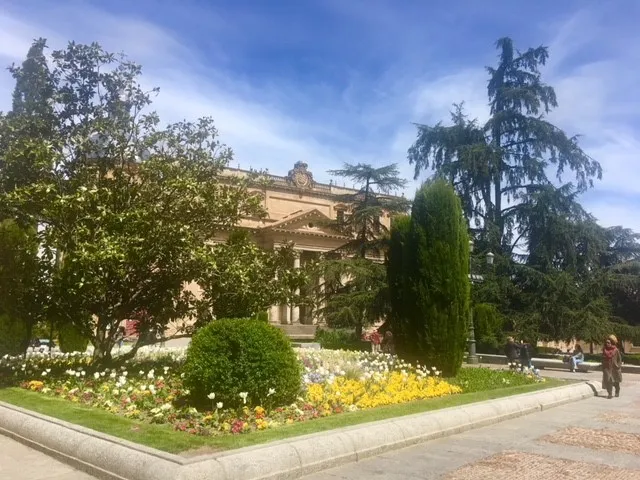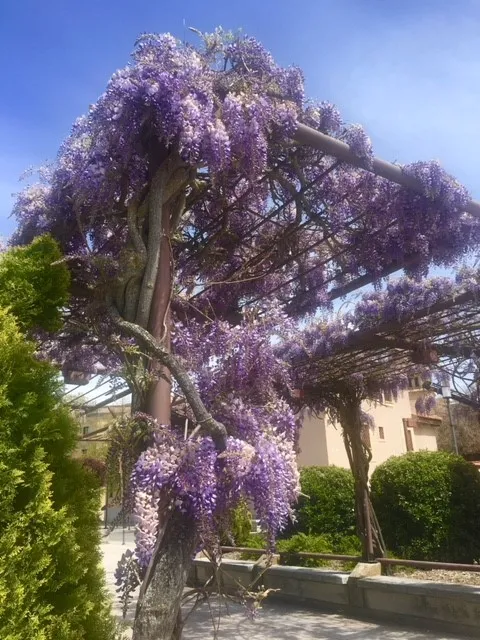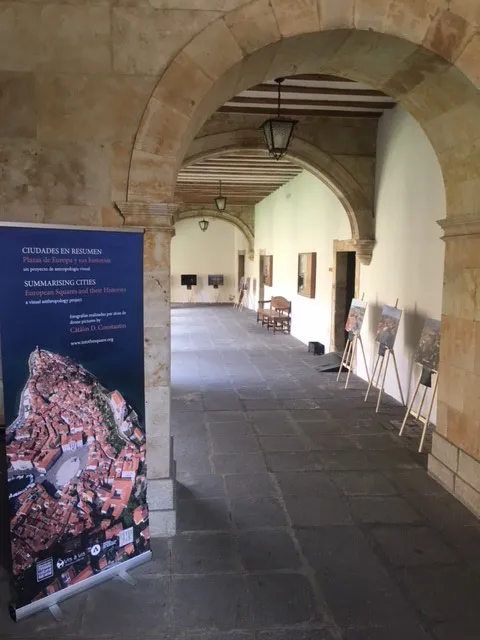2018 Activity Report
October Activity Report
October 2018
Global Japan Office Coordinator
OZAWA Saki
Daylight savings ended this year in October as always. The city seemed to cool down instantly; the mornings and nights became very cold, and people in the city are shivering as they go about their lives.
This month, I invited upperclassmen from the International Affairs Division to give a guidance session on overseas exchanges, at which they gave advice to students wanting to study abroad. Last year, we were able to send many students to Japan, so the upperclassmen who returned from these exchanges pitched in and were able to help give guidance to the next batch of students.
From this year onwards, now that there are classes in every year-level, I want to encourage inter-year cooperation and learning, and I think that this was the first step towards this.
The study abroad guidance session was held at lunchtime on Wednesday the 10th, as this was “Language Day”. So many students participated that they filled the largest lecture theater in the university. I could tell they were seriously thinking about going on exchange, as they listened carefully to the information on exchange programs, the universities they could apply to, and the deadlines, and also asked questions afterwards for more than 15 minutes.
As for the part of the session where students listened to their upperclassmen speak, we were able to introduce seven different host universities through the upperclassmen’s experiences. The overall content of this guidance session was organized by the International Affairs Division, with the GJO co-sponsoring the event, but the study abroad guidance sessions were run by the GJO, as were the booths set up after the sessions, at which students could talk freely with their upperclassmen.
There were many things that students could only discuss with the upperclassmen, such as their day-to-day lifestyles and exchange lifestyles, so they got really into these conversations.
Just as I did last year, I want to keep supporting my students so they can go on to challenge themselves by studying in Japan, which will open up a world of opportunities for them in the future.
On the 29th, a number of people, including Chief Yoshida of the Japan Foundation Madrid and the deputy governor of Gifu Prefecture, gathered for a Gifu Prefecture jikabuki performance at the Empress Michiko Hall of the Spanish-Japanese Cultural Center.
After this, an exhibition on traditional paper and jikabuki costumes from Gifu was set up in the same hall. I definitely want my students to visit this exhibition to experience a different culture.
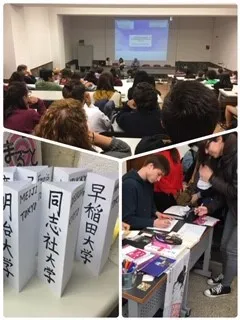
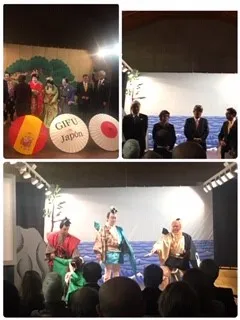
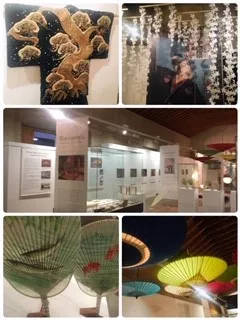
September Activity Report
September 2018
Global Japan Office Coordinator
OZAWA Saki
The new semester at the University of Salamanca in September. This time, the semester began right in the middle of the university’s 800th anniversary, so many events were held from the beginning of the month.
On September 18, the city was bustling with crowds, as the King of Spain was to make an appearance in Salamanca. Policemen were lifting up drains and inspecting the gutters, and there were special police cars parked in several spots, so the city’s usual bright vibe mixed with a new stricter one.
At the arts event held on this day, doctors (of philosophy) and university presidents from around the world walked in a parade from the university to the Plaza Mayor in the center of the city. There were many nuns among the spectators, who all watched as the parade arrived at the Plaza Mayor. Starting with the Mayor of Salamanca, many university presidents gave speeches about next year’s event in Canada, which added to the 800th anniversary celebration mood.
On the 20th, an opening ceremony for “The Superlative Artistry of Japan” was held at the Centro Cultural Hispano Japonés, which won a Japan Foundation Award last month on the 30th. This exhibition showcased various types of Japanese art from many different periods. Many people gave speeches at the opening ceremony press conference, including the President of the University of Salamanca, a Management Specialist from the Japan Foundation (Mr. Matsushima), and the head of the Centro Cultural Hispano Japonés. Students from the University of Salamanca’s Literature Department also attended this event, and showed great interest in the speeches and artwork.
Since 1973, the “Japan Foundation Award” that was awarded to the Centro Cultural Hispano Japonés has been awarded every year to organizations and individuals making major contributions to cross-cultural understanding between Japan and other countries through cultural activities such as art and academics. This is the first time the award has been awarded within Spain. The Center was awarded for being “the center of Japanese cultural promotions in Spain”, and in light of this I would like to work towards furthering relations between the Center and my department at the university to further promote Japanese culture in Salamanca.
In other news, it has been four years since my department was created, so this semester was the first time we had students in all four year-levels. I am very aware of the fact that this year we will send our first batch of graduates into the world, and so I want to make their final year in this department an even more worthwhile and fruitful one.
From next month onwards we will also hold an information session for lowerclassmen in which they can ask their upperclassmen for advice concerning overseas exchanges. From this year onwards, now that we have students in all four year-levels, us teachers are working hard to sow the seeds that will lead to cooperation and mutual learning both within and between these year-levels.
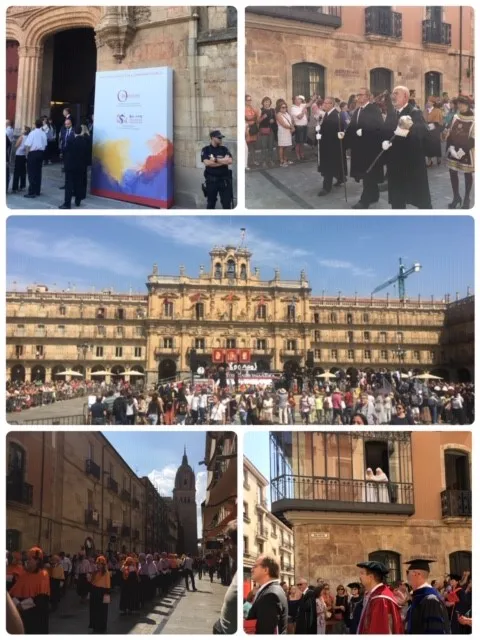
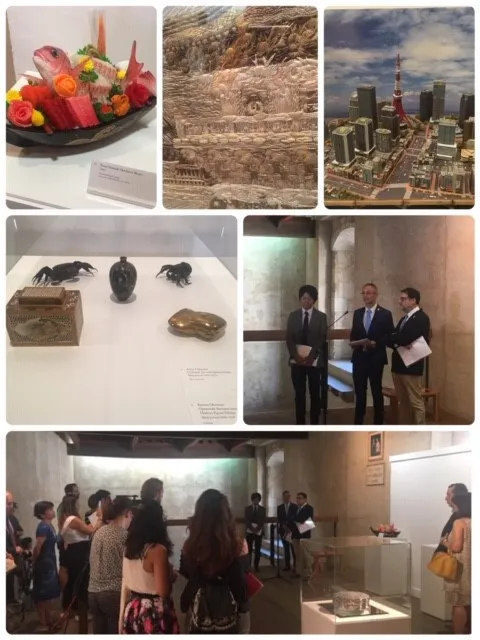
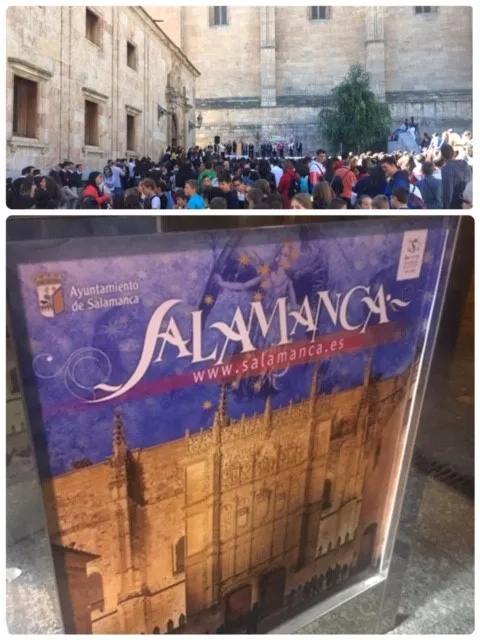
June Activity Report
June 2018
Global Japan Office Coordinator
OZAWA Saki
Coming into June, Salamanca seemed to warm up instantly, and the blazing sunshine started to come out almost every day. As the seasons changed, I felt that the city did too. Since the sun began to stay up until 9pm, the summer spirit came back to the city, and now many people are out and about until late at night. Many more events and exhibitions have been held at both the University and around the city, including large shows such as projection mapping.
At the University of Salamanca, the second semester is held from early February until mid-May, after which an exam period is held for second semester exams, first semester supplementary exams, and second semester supplementary exams. I wrote about this last month, but this exam period is quite long and takes more than a month to finish. This month I mostly oversaw supplementary exams and finished up my work for the academic year. It was a busy month for me as I worked hard preparing students for the content of the last-chance supplementary exams, and answered any questions students had about their results.
By the end of June, the students’ grades for the entire year were released, and the academic year finally came to an end.
In the Japanese major, more focus was put on learning kanji this last semester, so I think it was a tough semester for many students. However, the students who set their sights on their goals and put effort into the smaller tests throughout the semester were able to improve their kanji proficiency, which further cultivated their general vocabulary and reading comprehension abilities.
The students who saw the fruits of their efforts, and the ones who still need to practice, are now starting their summer vacations. Here at the GJO we will be preparing for next year’s support activities, which includes discussing plans with our fellow teachers, and preparing exchange documents for the next academic year. I hope that my students will revise what they learnt over the past year and have a productive break so they can become more interested in Japanese culture heading into the new semester.
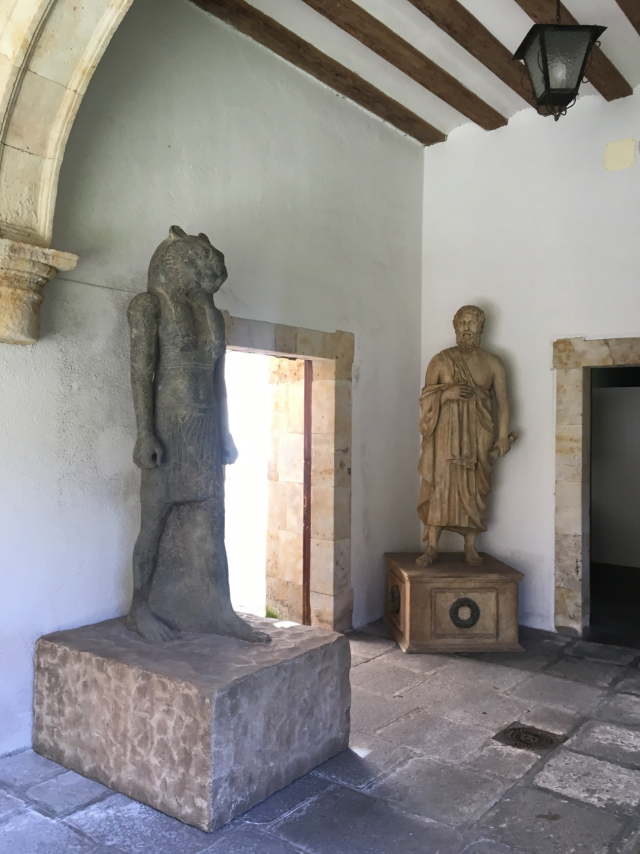
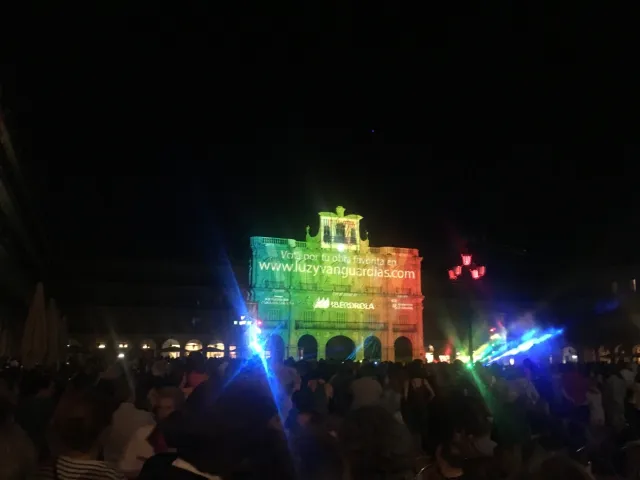
May Activity Report
May 2018
Global Japan Office Coordinator
OZAWA Saki
In May, Salamanca seemed to be stuck somewhere between spring and summer, and the weather somehow required both a windbreaker and a t-shirt. While April is usually the rainy season, downpours and thunder/lightning continued on into May, making the weather very unpredictable. On the other hand, as summer drew nearer, I saw more and more tourists around the city.
In the latter half of May, a film began shooting in Salamanca, so some streets were blocked off and you couldn’t walk through the Plaza Mayor. I don’t know what kind of film it is, but I am looking forward to finding out once it has been completed.
This year is the University of Salamanca’s 800th anniversary, so there are many events scheduled to be held around the city, including music, illuminations and performances at the Plaza Mayor. Coupled with the film shooting, the city is becoming even more lively than usual.
This month at the University of Salamanca was the last month of classes for the current academic year. In Spain, second semester classes begin in early February and end in mid-May. Because of this, students have their final exams in mid-May after all their classes end.
Exams in Spain are quite different to those at TUFS and other Japanese universities, as students who fail exams can sit supplementary exams. Supplementary exams are all held in the second semester’s examination period, even those for first semester classes. Because of this, both the second semester exams, and the first and second semester supplementary exams, are held during this period, making it an intense exam period that lasts for more than one month.
As a result, I was inundated with questions about exams this month, and did a final check before the exam period to ensure my students were prepared. In the Japanese major, more focus has been put on learning kanji than in previous years, so quite a few students were worried about this. Leading up to the exam period, I made sure to go over the exam’s content, structure and grading system, and to answer the students’ individual questions, especially those on the exam itself, so they would be able to prepare themselves to sit the exam with confidence.
Once the exam period began, the university was different from usual, and I rarely saw students walking the halls. I assume this means they were studying hard at home or in the library, but I did see some of my students, who were excitedly preparing to study abroad in Japan after the summer vacation. I hope the students will get good results by demonstrating the fruits of their efforts.
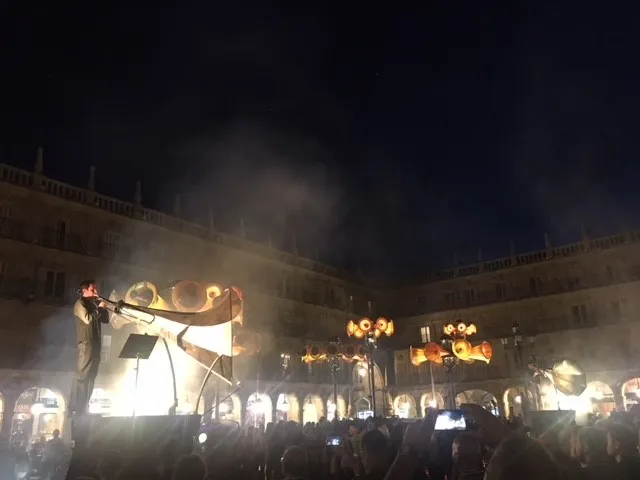
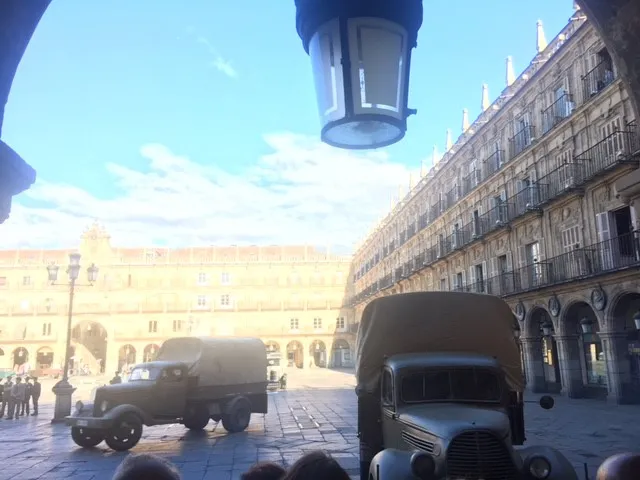
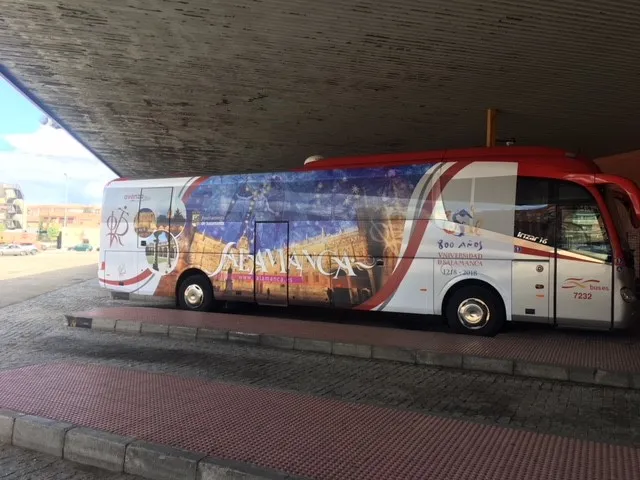
April Activity Report
April 2018
Global Japan Office Coordinator
Saki Ozawa
As April approached, spring took over Salamanca, and the weather gradually made me feel as if the long winter had finally come to an end. Spain has short springs, so I also feel like the warm spring sunlight is already being replaced by the blazing summer rays.
In the latter half of the month, tourists increased and I noticed more and more tables being put in the streets for people to enjoy the weather. Even at the Plaza de Anaya, the plaza in front of the cathedral facing the university, colorful flowers are blooming and decorating the space, making people smile a lot more.
Time really flies by here, and a quick glance at the calendar made me realize that the examination period begins next month.
Excitement is still in the air after the visit from the Japanese high school students last month, so the students still remember this fun Japanese language experience, and are still hoping to use Japanese more and more. As classes and exams draw nearer, the students are exactly in a place between their dreams and reality, and are studying hard for this last spurt. The professors are also preparing for the end of the semester.
Recently, students majoring in Japanese have a lot of pride, and even in the beginner classes, more and more students are trying their best to only ask questions in Japanese. I feel very proud of these students. I hope that my students continue to push forward without worrying about making mistakes, and I also want to continue providing a place where they can learn.
This month, the Association of Japanese Language Teachers in Spain (Asociación de Profesores de Japonés en España, APJE) held a general workshop. Professor Yuko Suzuki from the Complutense University of Madrid taught this workshop to the topic of “Implementing CEFR Ideology in the Classroom”. This workshop was a very stimulating experience, and had participants form groups to create lesson plans, and then share them with the other groups. Even between teachers, there is still much to learn (and teach) in a lecture/workshop style class, and I felt like I learnt a lot from the content of the workshop, including some good “model lessons”.
Whether they’re a “university student”, a “Spanish student” or a “Japanese major”, and even if they are all from the same university, same generation and speak the same language, every student is unique, and have their own groups within their years and classes. Because of this, I think that trying out new teaching methods is beneficial to and significant in diversifying and revitalizing learning.
CEFR, the topic of the workshop, is a very well-known framework for language teaching, but I think many teachers struggle in implementing it in the classroom. I am very grateful to regularly have the chance to study with veteran teachers and learn their different views and footwork towards new ways of teaching.
It has been almost three years since the university began offering an undergraduate course in East Asian studies, and I would like to use this opportunity to start over and attempt to innovate and reform the education even more.
